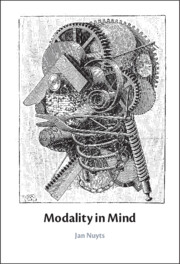Book contents
- Modality in Mind
- Modality in Mind
- Copyright page
- Contents
- Figures
- Tables
- Preface
- 0 Introduction
- 1 The Cognitive-Functional Approach
- 2 Qualifying States of Affairs
- 3 Modality Revisited
- 4 Attitudes
- 5 Beyond the Qualificational Hierarchy
- 6 (Inter)subjectivity, and More
- 7 Back to the Cognitive-Functional Approach
- 8 Conclusion
- References
- Person Index
- Subject Index
3 - Modality Revisited
Published online by Cambridge University Press: 25 March 2025
- Modality in Mind
- Modality in Mind
- Copyright page
- Contents
- Figures
- Tables
- Preface
- 0 Introduction
- 1 The Cognitive-Functional Approach
- 2 Qualifying States of Affairs
- 3 Modality Revisited
- 4 Attitudes
- 5 Beyond the Qualificational Hierarchy
- 6 (Inter)subjectivity, and More
- 7 Back to the Cognitive-Functional Approach
- 8 Conclusion
- References
- Person Index
- Subject Index
Summary
This and the next chapter together offer a reanalysis of the semantic domain covered by the traditional notion of modality. On the basis of a scrutiny of the characteristics of the individual qualificational categories involved, they propose a view of the organization of the field that differs from earlier analyses in the literature. The present chapter focuses on the definition of the traditional modal subcategories: dynamic, deontic and epistemic modality. It discusses the differences of the present approach with classical conceptions of the categories in the literature. The chapter moreover critically reviews alternative divisions of (parts of) the field proposed earlier, and it surveys and deconstructs the most important traditional arguments for covering the three semantic categories in one (super)category of modality.
Keywords
- Type
- Chapter
- Information
- Modality in Mind , pp. 67 - 100Publisher: Cambridge University PressPrint publication year: 2025

